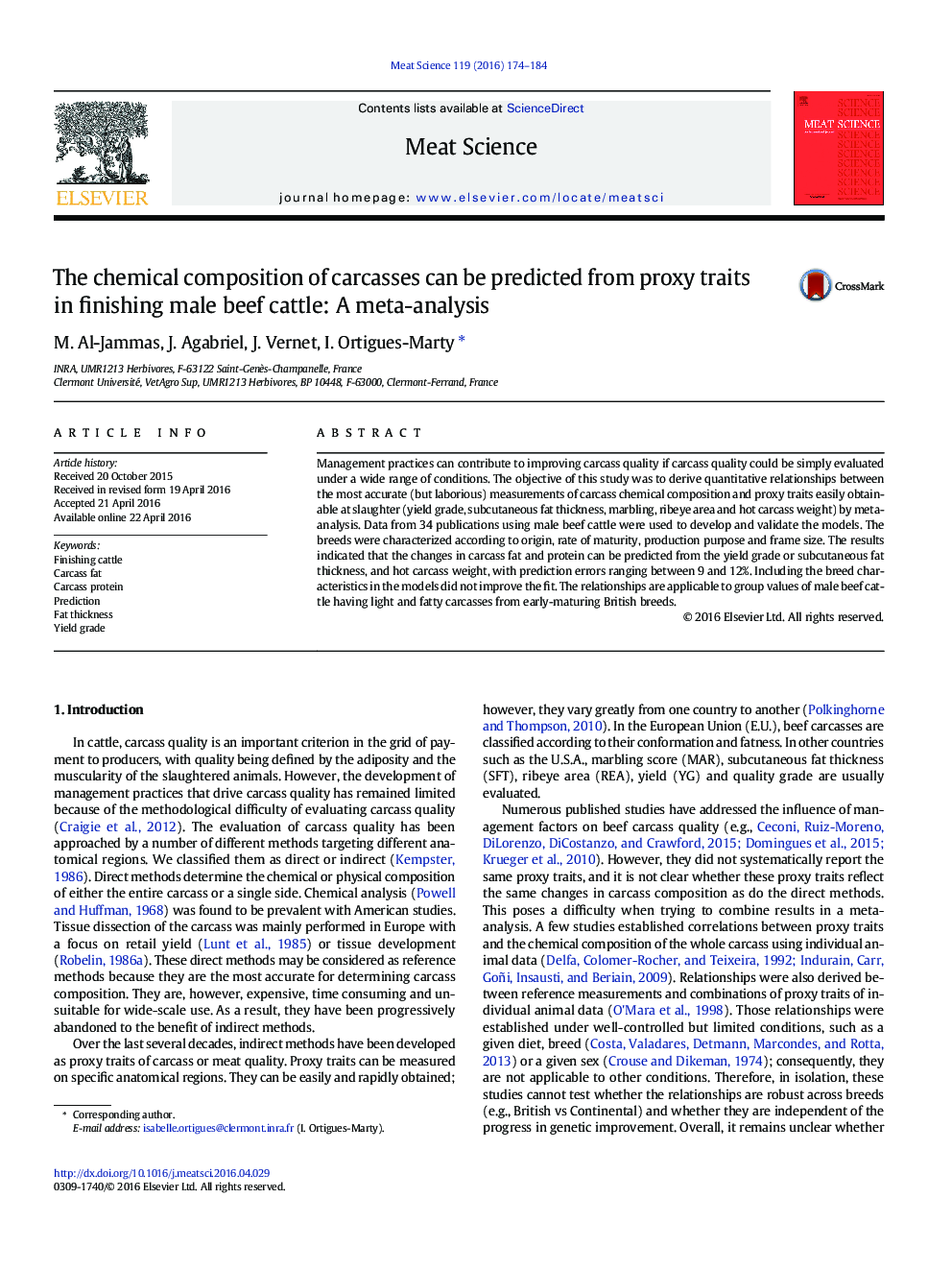| Article ID | Journal | Published Year | Pages | File Type |
|---|---|---|---|---|
| 2449382 | Meat Science | 2016 | 11 Pages |
Management practices can contribute to improving carcass quality if carcass quality could be simply evaluated under a wide range of conditions. The objective of this study was to derive quantitative relationships between the most accurate (but laborious) measurements of carcass chemical composition and proxy traits easily obtainable at slaughter (yield grade, subcutaneous fat thickness, marbling, ribeye area and hot carcass weight) by meta-analysis. Data from 34 publications using male beef cattle were used to develop and validate the models. The breeds were characterized according to origin, rate of maturity, production purpose and frame size. The results indicated that the changes in carcass fat and protein can be predicted from the yield grade or subcutaneous fat thickness, and hot carcass weight, with prediction errors ranging between 9 and 12%. Including the breed characteristics in the models did not improve the fit. The relationships are applicable to group values of male beef cattle having light and fatty carcasses from early-maturing British breeds.
